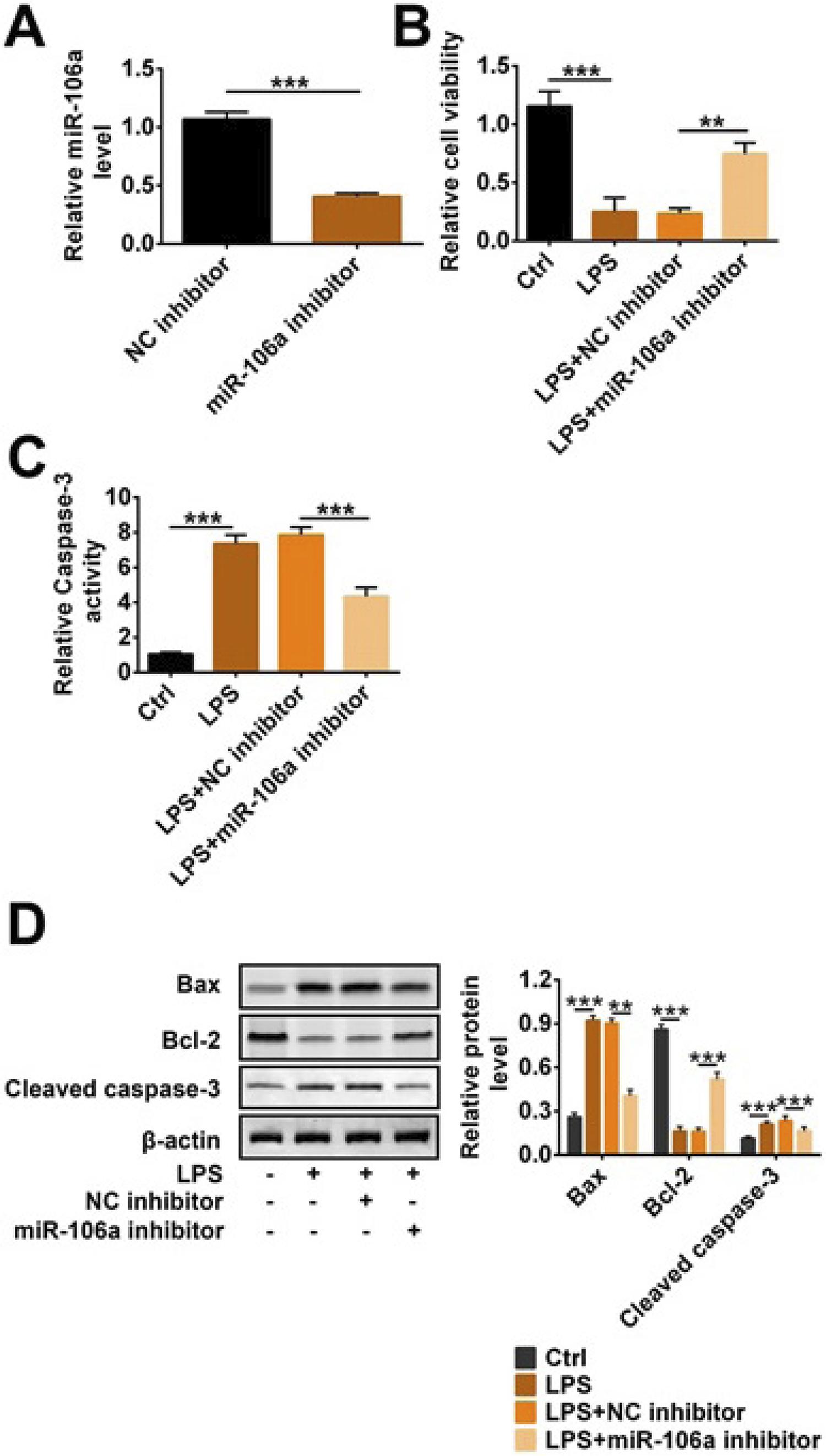Abstract
Purpose
To investigate the role and related mechanisms of miR-106a in sepsis-induced AKI.
Methods
Serum from sepsis and healthy patients was collected, sepsis mouse model was established by cecal ligation and puncture (CLP). TCMK-1 cells were treated with lipopolysaccharide (LPS) and transfected with THBS2-small interfering RNA (siTHBS2), miR-106a inhibitor, miR-106a mimics and their negative controls (NCs). The expression of miR-106a, thrombospondin 2 (THBS2), Bax, cleaved caspase-3 and Bcl-2, cell viability, relative caspase-3 activity and TNF-α, IL-1β, IL-6 content were respectively detected by quantitative real-time polymerase chain reaction (qRT-PCR), western blotting, Cell Counting Kit-8 (CCK-8) and enzyme linked immunosorbent assay (ELISA). The relationship between miR-106a and THBS2 was confirmed by dual luciferase reporter assay.
Results
MiR-106a was up-regulated in serum of sepsis patients, CLP-induced mice models and LPS-induced TCMK-1 cells. LPS reduced cell viability and Bcl-2 expression, and increased caspase-3 activity, Bax expression, the content of TNF-α, IL-1β, IL-6. THBS2 was a target of miR-106a. The decreases of caspase-3 activity, TNF-α, IL-1β, IL-6, Bax expression and the increases of cell viability, Bcl-2 expression caused by miR-106a knockdown were reversed when THBS2 silencing in LPS-stimulated TCMK-1 cells.
Conclusion
MiR-106a aggravated LPS-induced inflammation and apoptosis of TCMK-1 cells via regulating THBS2 expression.
Sepsis; Acute Kidney Injury; Lipopolysaccharides; Mice





